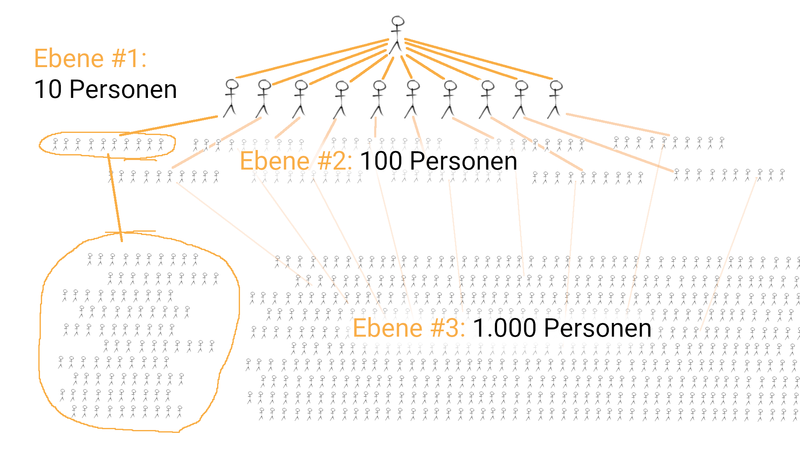Note: This is an automated translation (using DeepL) of the original German article.
Or: why it matters right now that we limit our contacts to the maximum.
With the holidays approaching, the question arises: which parts of the family should we visit and how safe is it? For many, it has been customary to visit their “own” side of the family on one day and their in-laws on the other. In between maybe meeting a few relatives and then on New Year’s Eve celebrating the New Year together with friends….
And how should we celebrate this year, with COVID-19?
The big problem with the COVID-19 epidemic is the rapid spread of the disease. The virus behaves like a conflagration: it can only spread quickly if it finds enough “food” - in the case of the virus: healthy people. And this happens when people have and maintain many (personal) social contacts.
The driving role here is that each person has his or her own contact network, which is different from others. Only the overlapping of these networks enables the virus to spread like wildfire, as a simple example shows.
If person A is in contact with ten other people at a birthday party (level #1), then he has ten contacts here. If each of these ten people - for the sake of simplicity - meets ten of their own friends in the next few days (at private meetings, celebrations or at work - level #2), then (10 * 10 = ) 100 more people are now affected. These people in turn have their separate contacts (level #3), which is now already 1,000 people (100 * 10) and one step later (level #4) it is already 10,000 additional. So in total 1+10+100+1,000+10,000 = 11,111 people.
 The snowball effect is responsible for the explosive spread of COVID-19. With 10 contacts each, 1.000 people are reached after three steps.
The snowball effect is responsible for the explosive spread of COVID-19. With 10 contacts each, 1.000 people are reached after three steps.
What if, in this network, all affected people reduced their social contacts by half (i.e. 50%)? How long would it then take to reach more than 10,000 people in the chain of infection? Our source person A now has five contacts (level #1). These five people in turn have five contacts each in level #2 - so 25 people affected. In level #3 there are 125 more contacts and in level #4 there are 625 (5 * 125). Level #5 has 3,125 and level #6 already has 15,625, so it takes only 2 steps longer to reach 11,111 - and with 15,625 people are clearly exceeded.
On the other hand, with a 70% reduction in social contacts (i.e., three contacts instead of ten), three people are affected at level #1, nine more at level #2, and 27 people at the third level (total: 40 people). At level #4 it is 81, at level #5 another 243 persons, at level #6 an additional 729 and at level #7 another 2,187 persons. Even at level #8 (6,561 more people), the total is only 9,841 people. That is still significantly fewer than in the first example at the 4th level (11,111) and in the second at the 6th level (15,625)!
Only at the 9th level of the pyramid (19,683 additional) is the chain of infection of the previous two examples exceeded.
Of course, not all persons in a network become infected. But just as a fire without fuel just dies, the virus needs healthy people to spread - and the fewer people in contact with each other, the slower the virus can spread. The positive thing about reducing social contact is that much more helps!
For the holidays, this means (unfortunately): reduce contacts to the minimum. Because the more people meet (one after the other) in groups, the faster the virus can spread - and the case numbers explode again. So it’s only up to our behavior and contact reduction how the situation will look like after the holidays.
